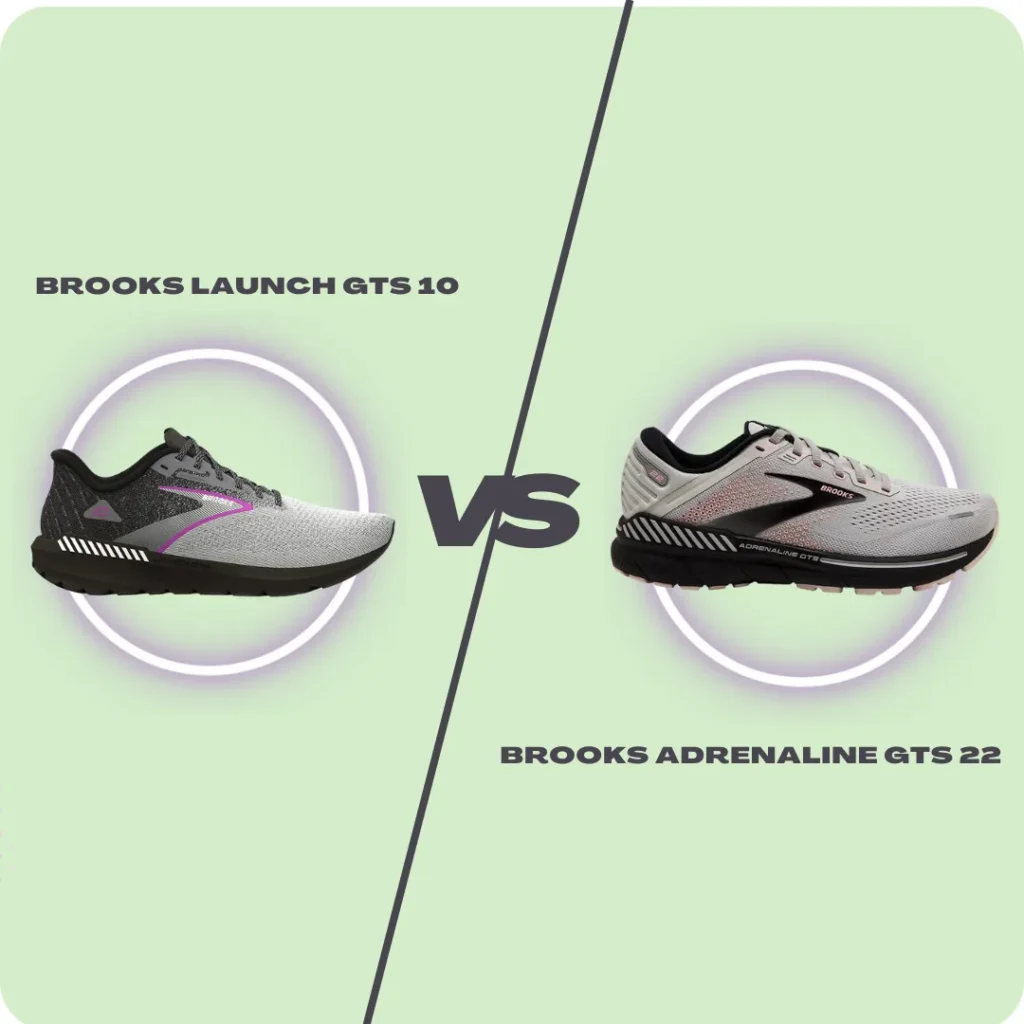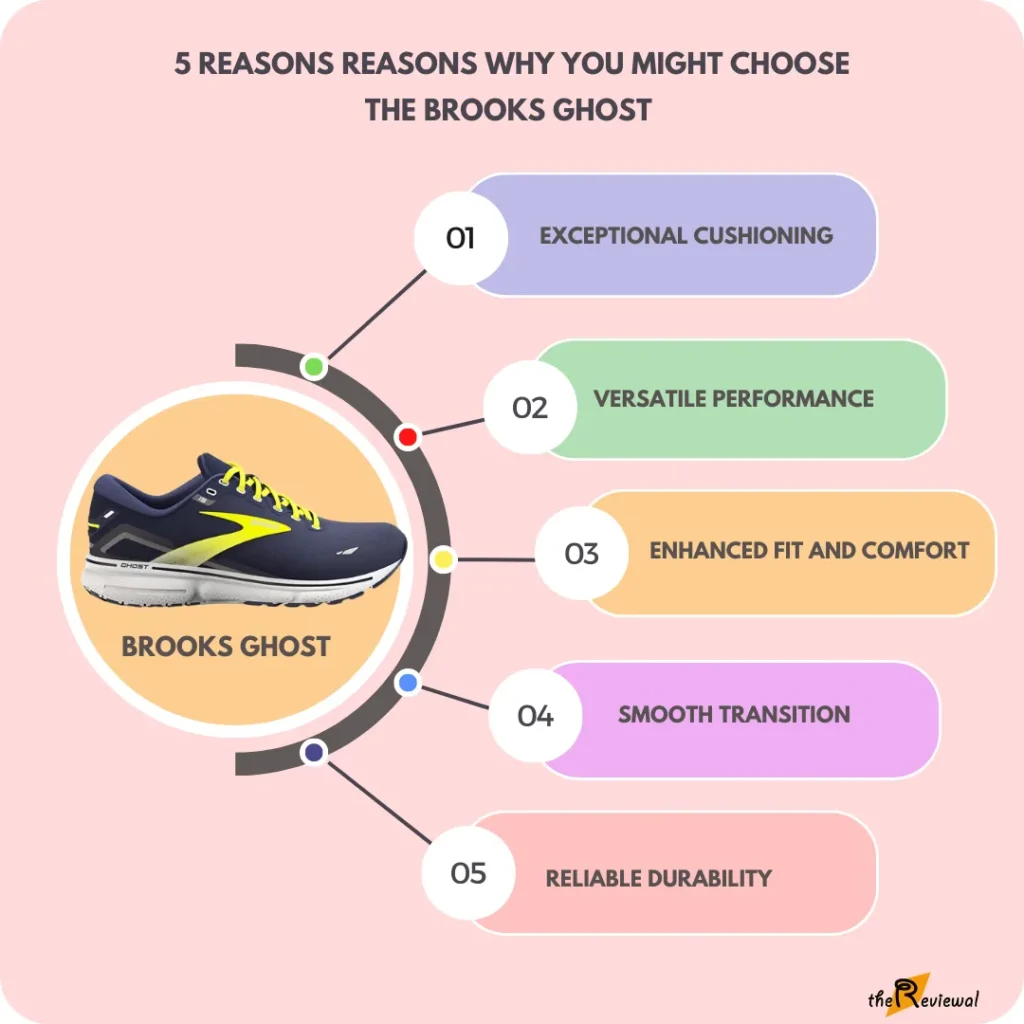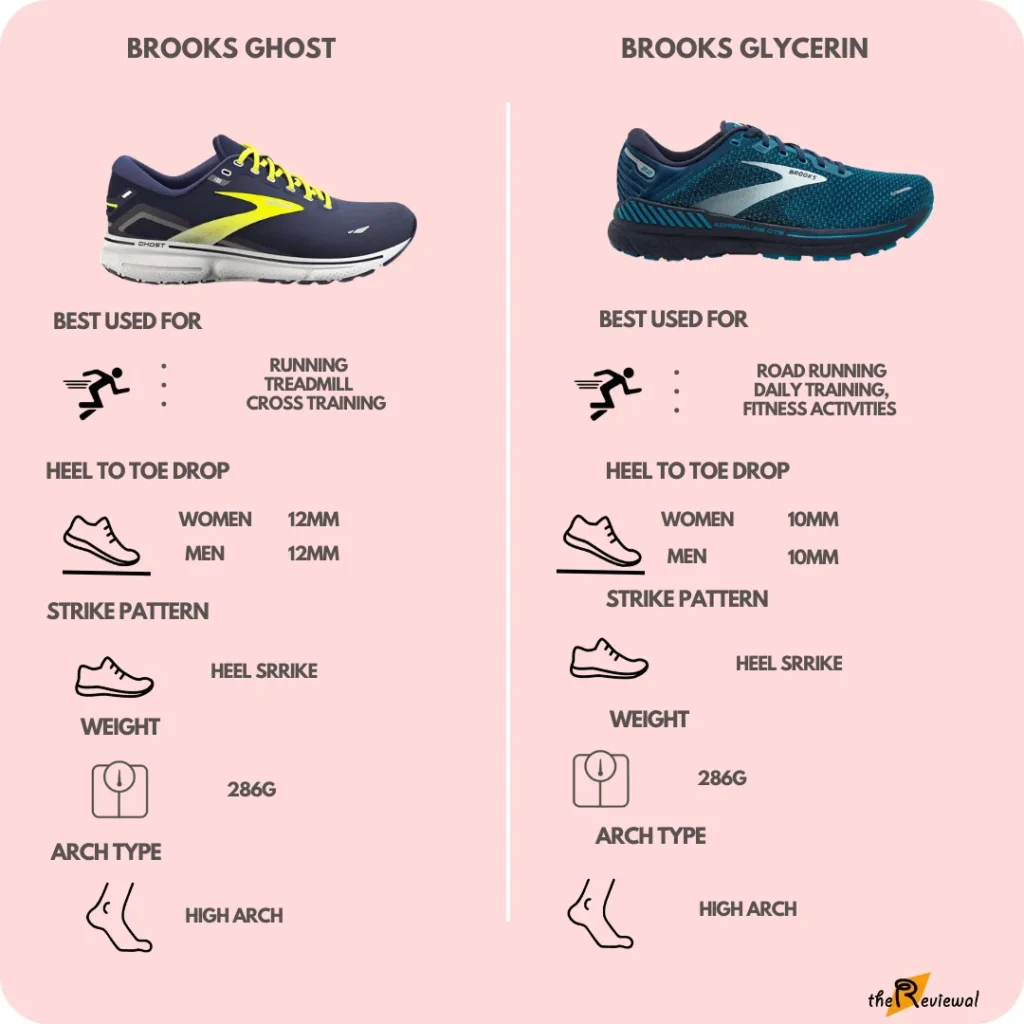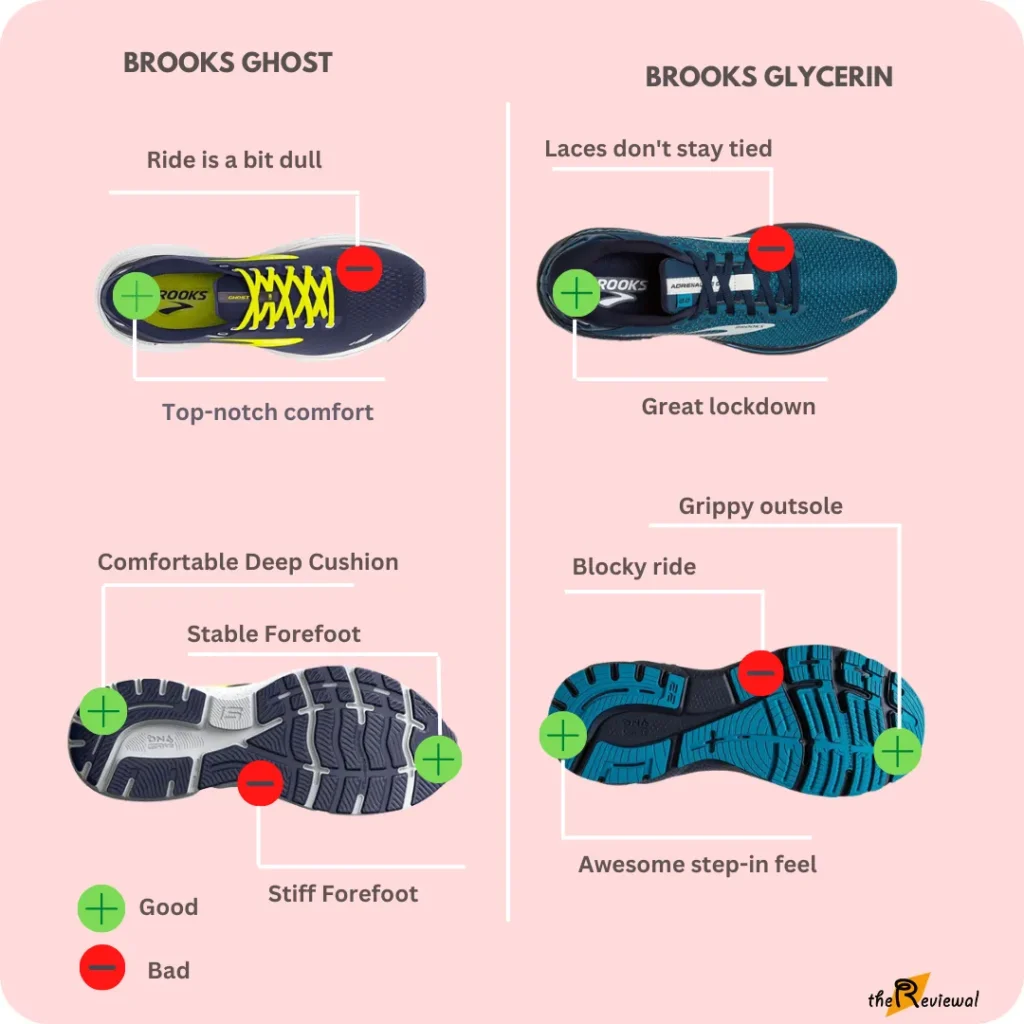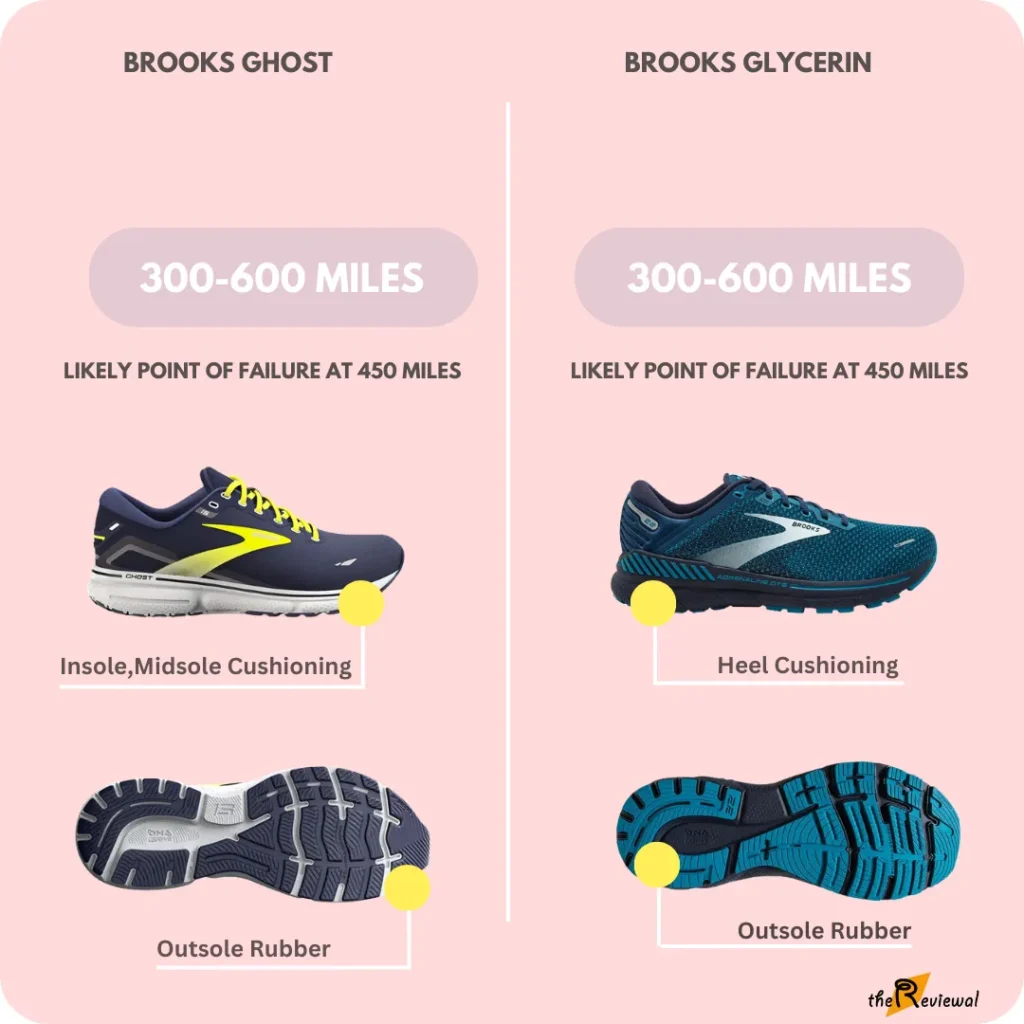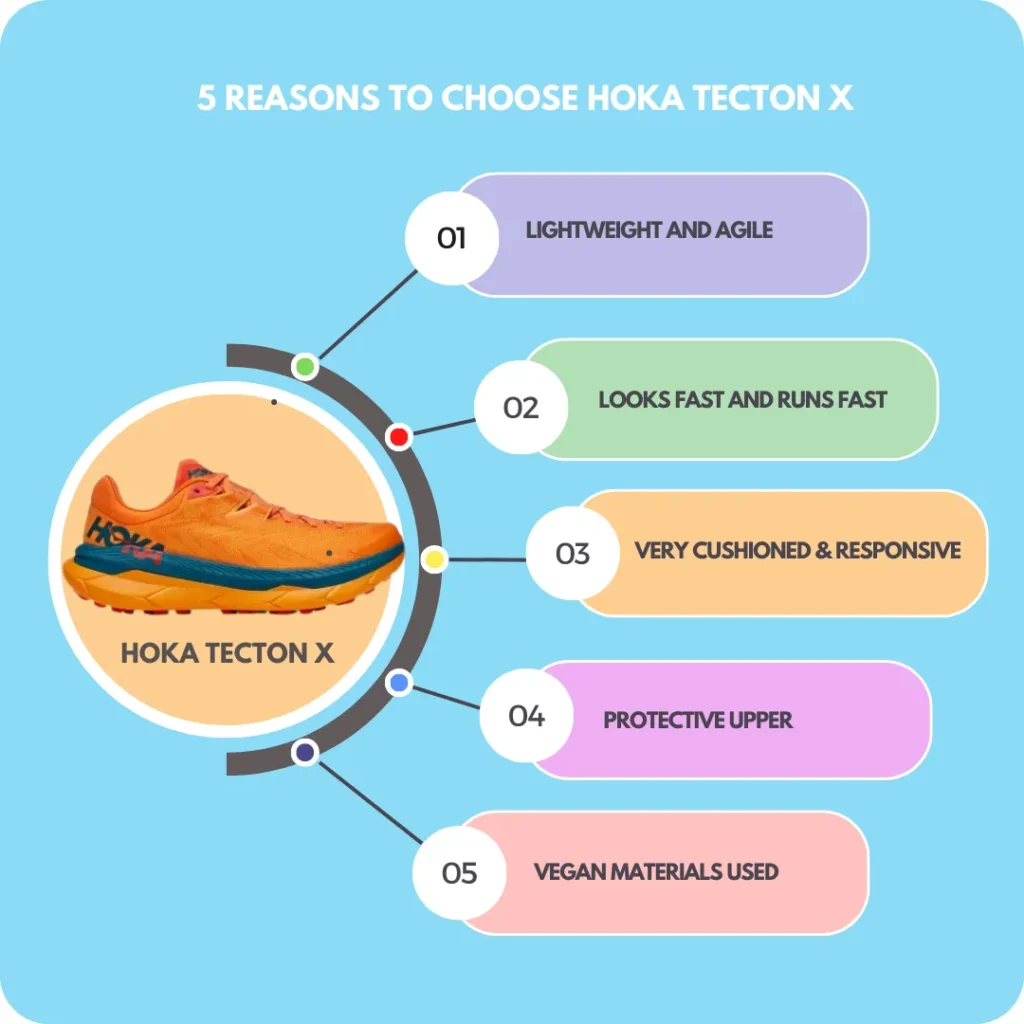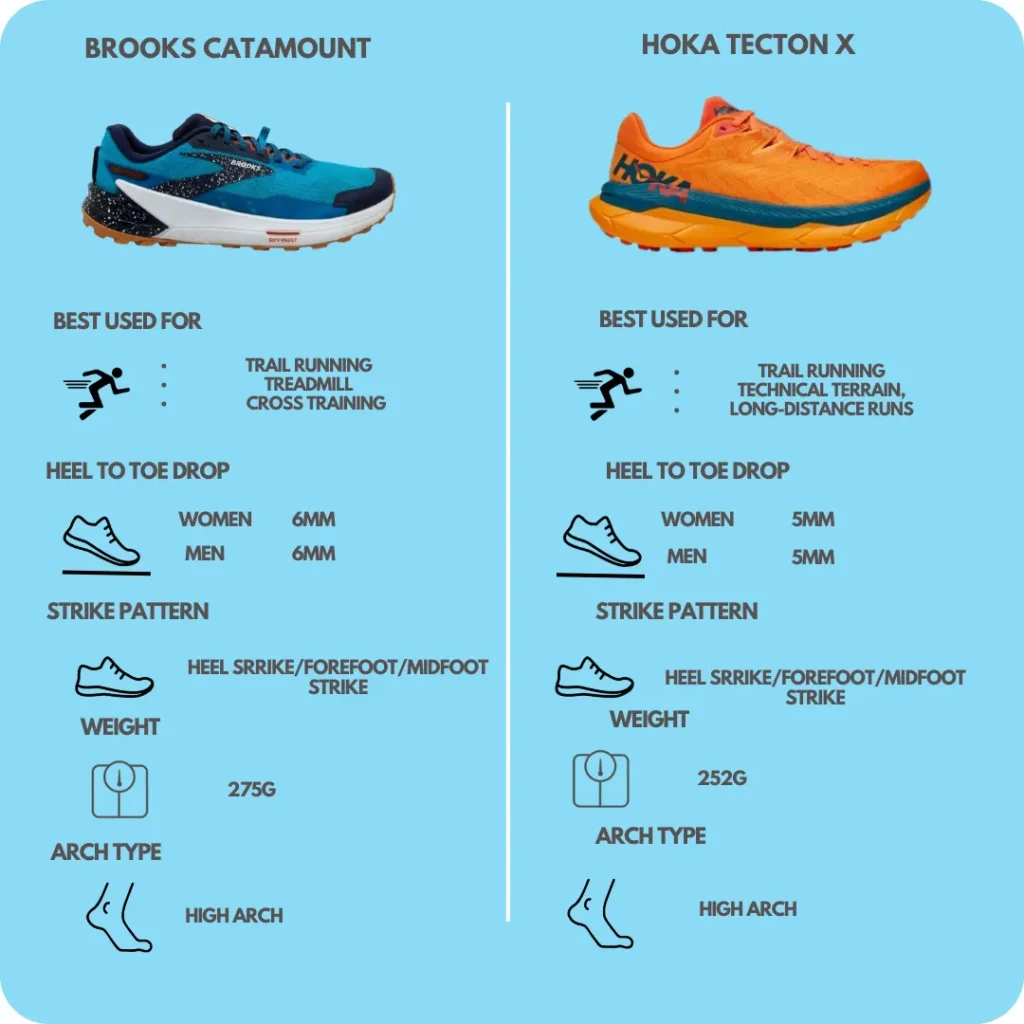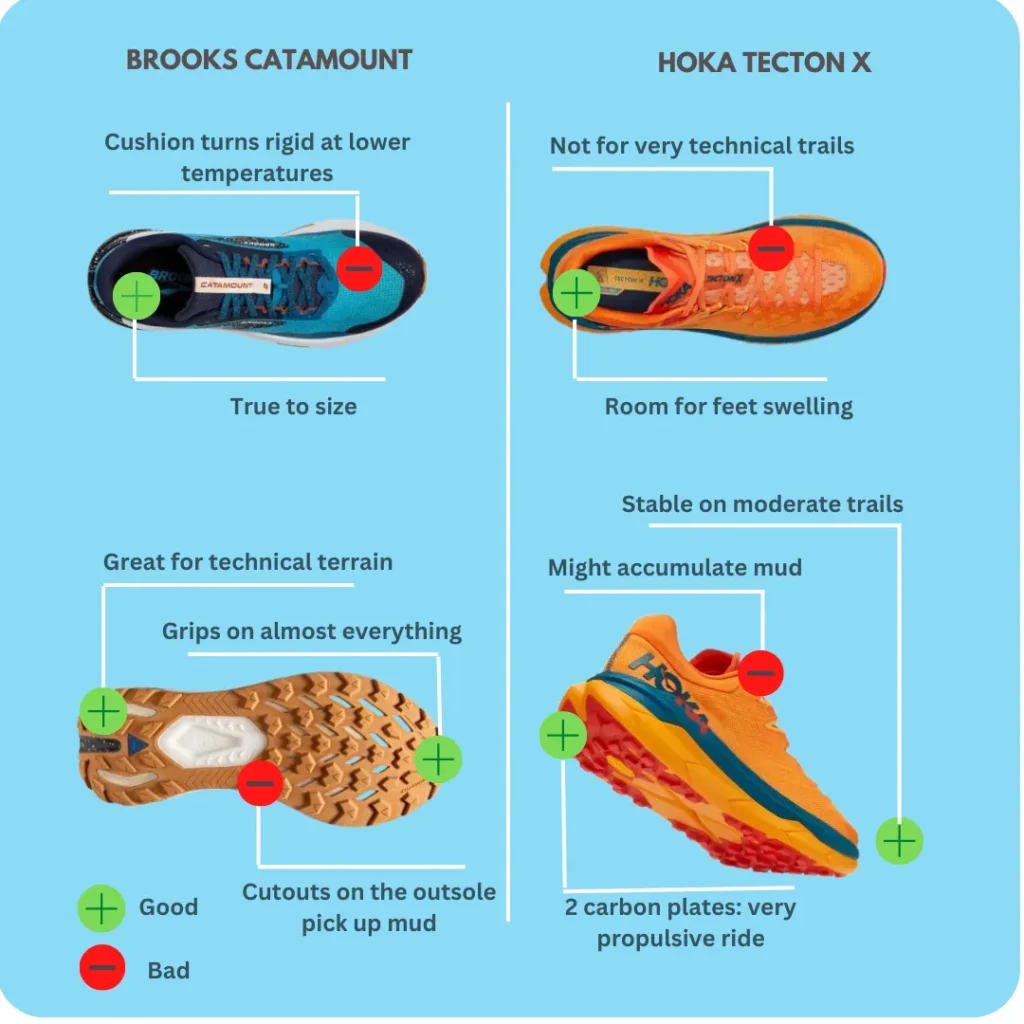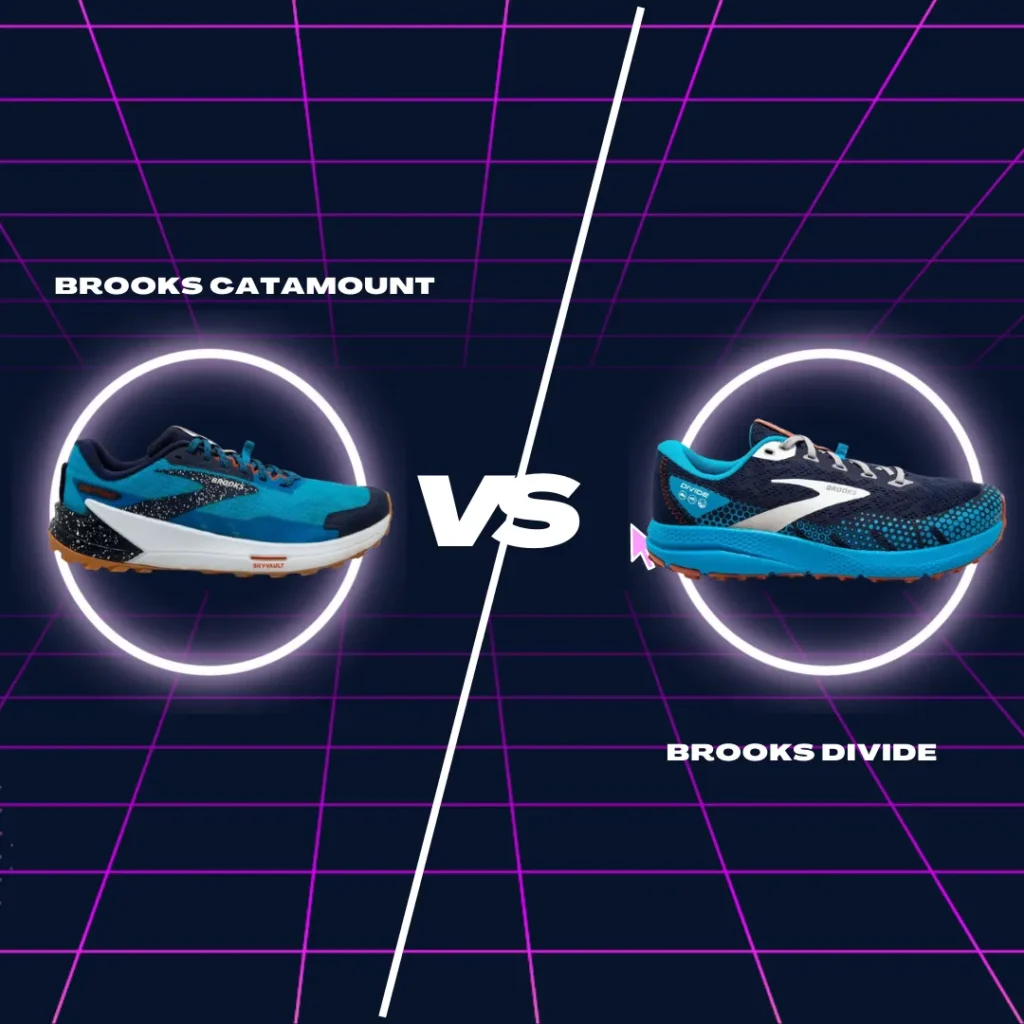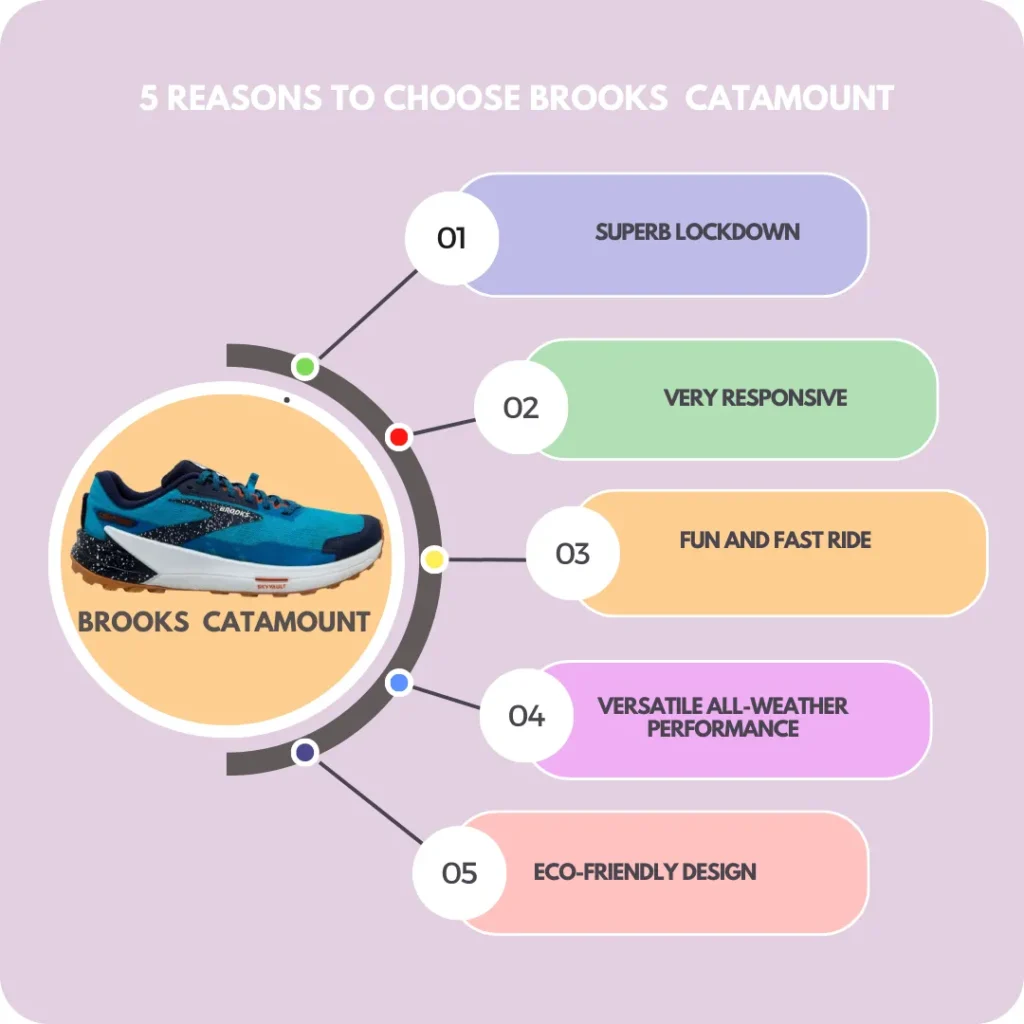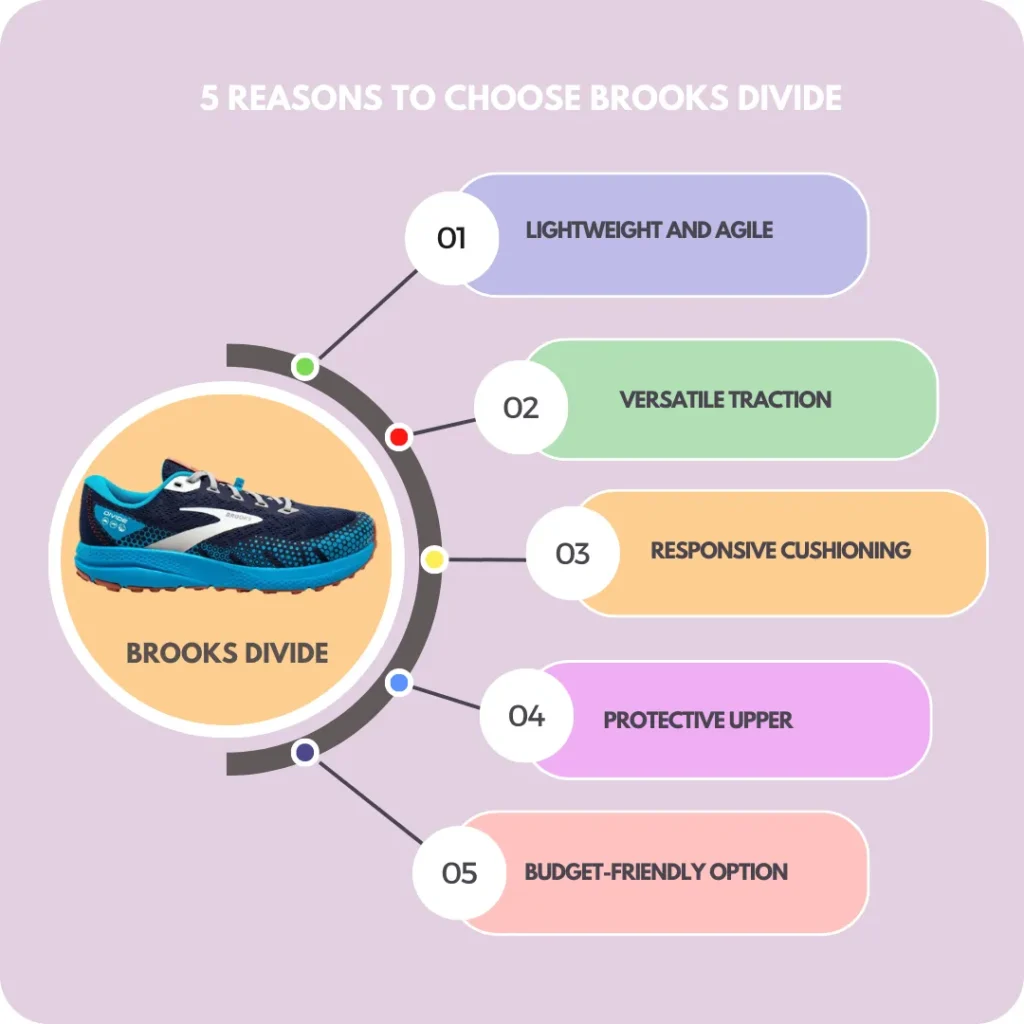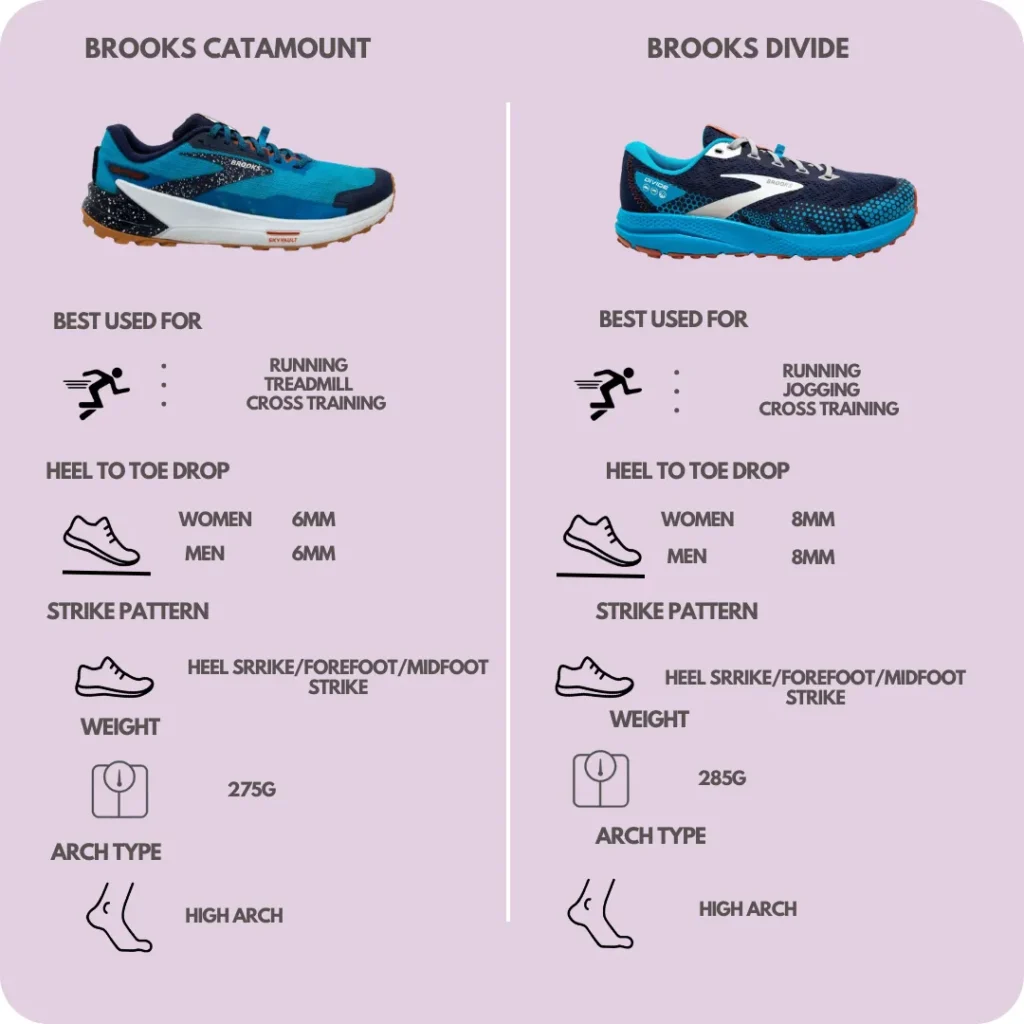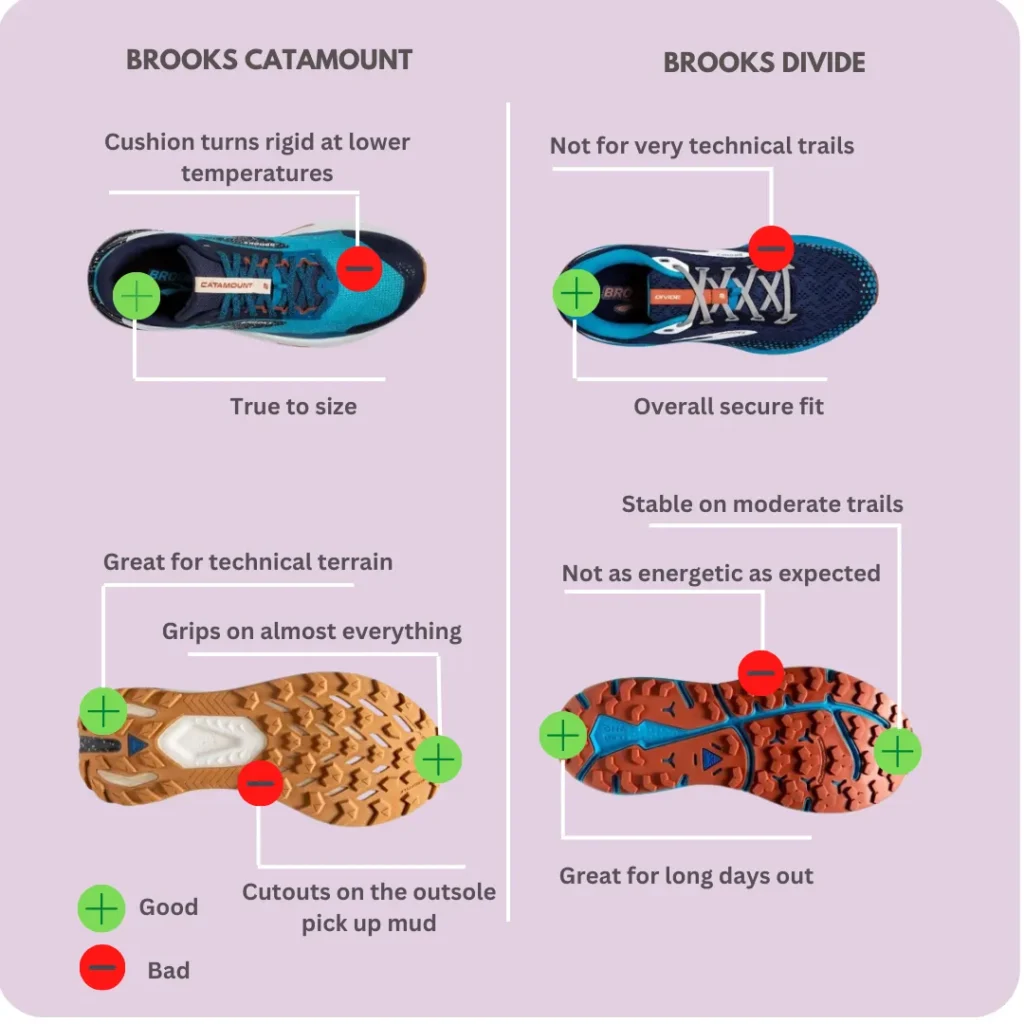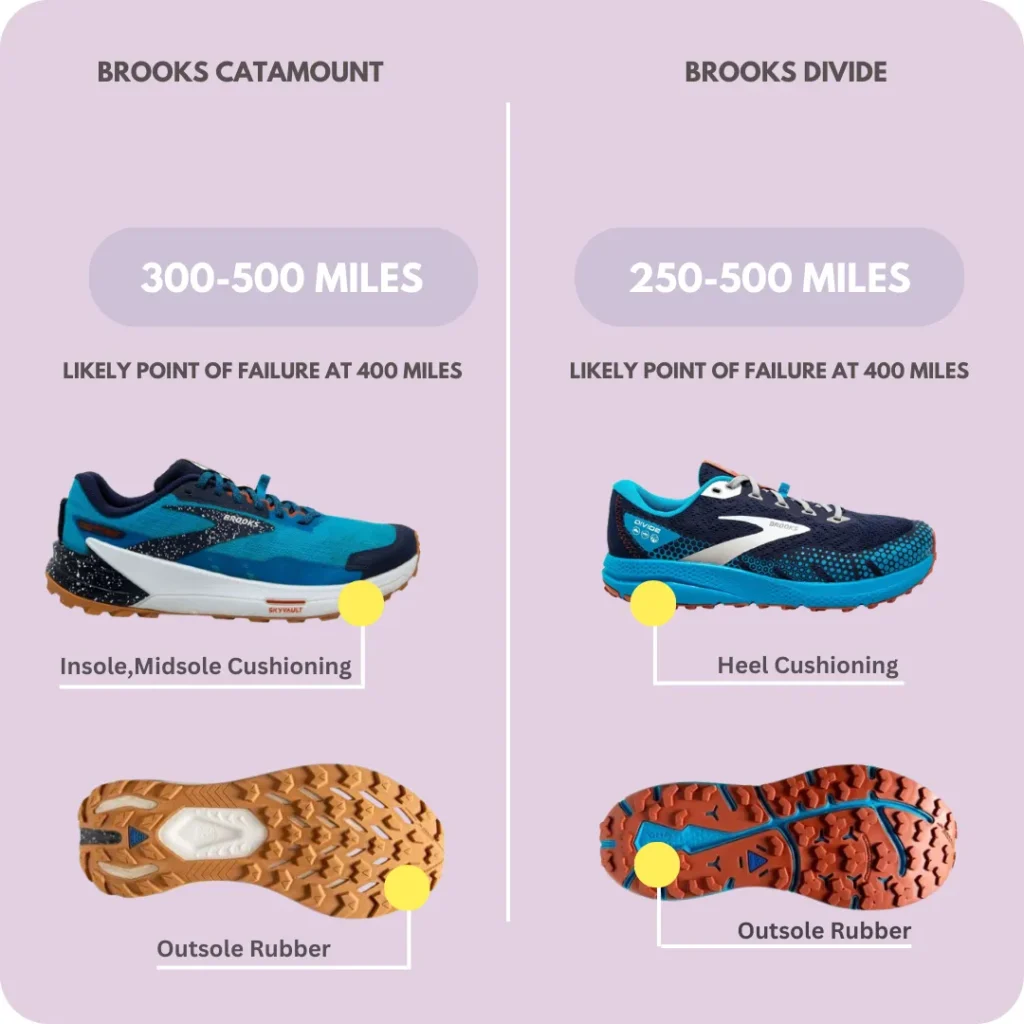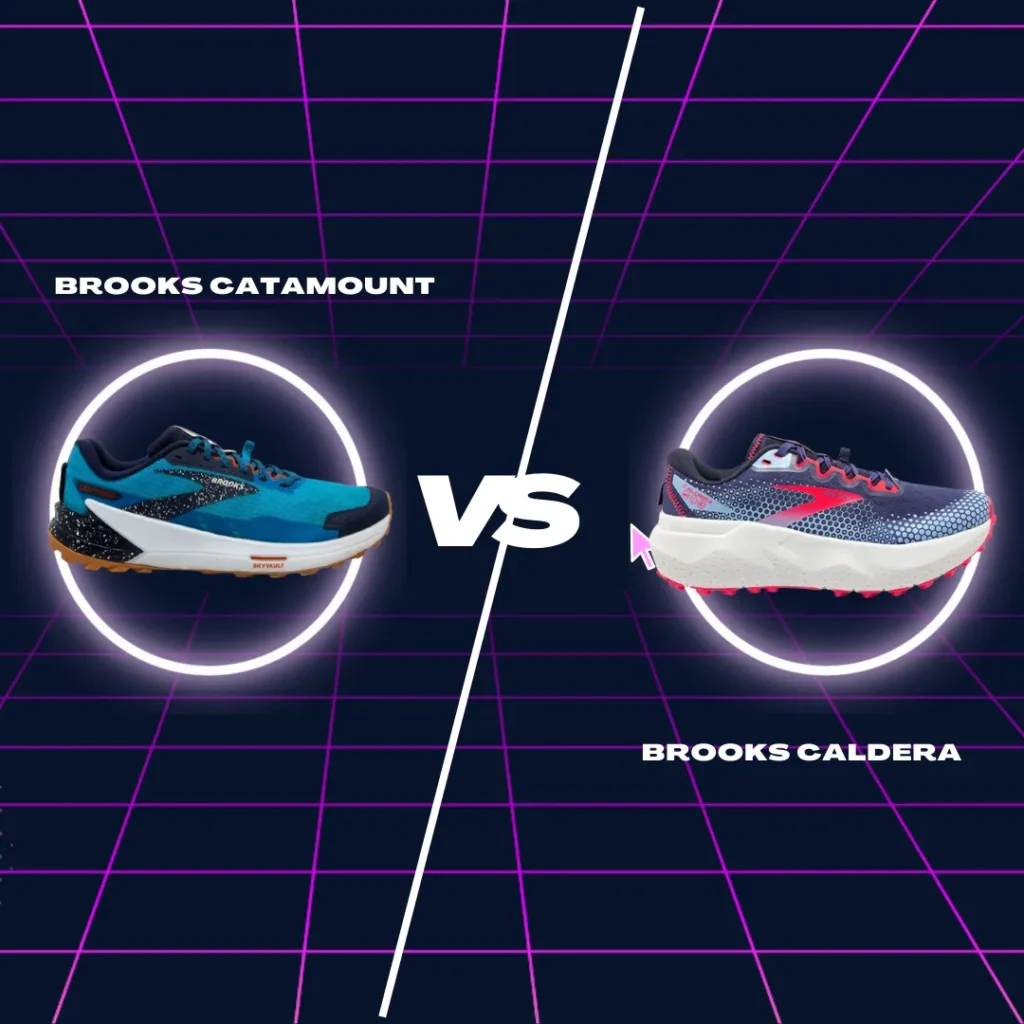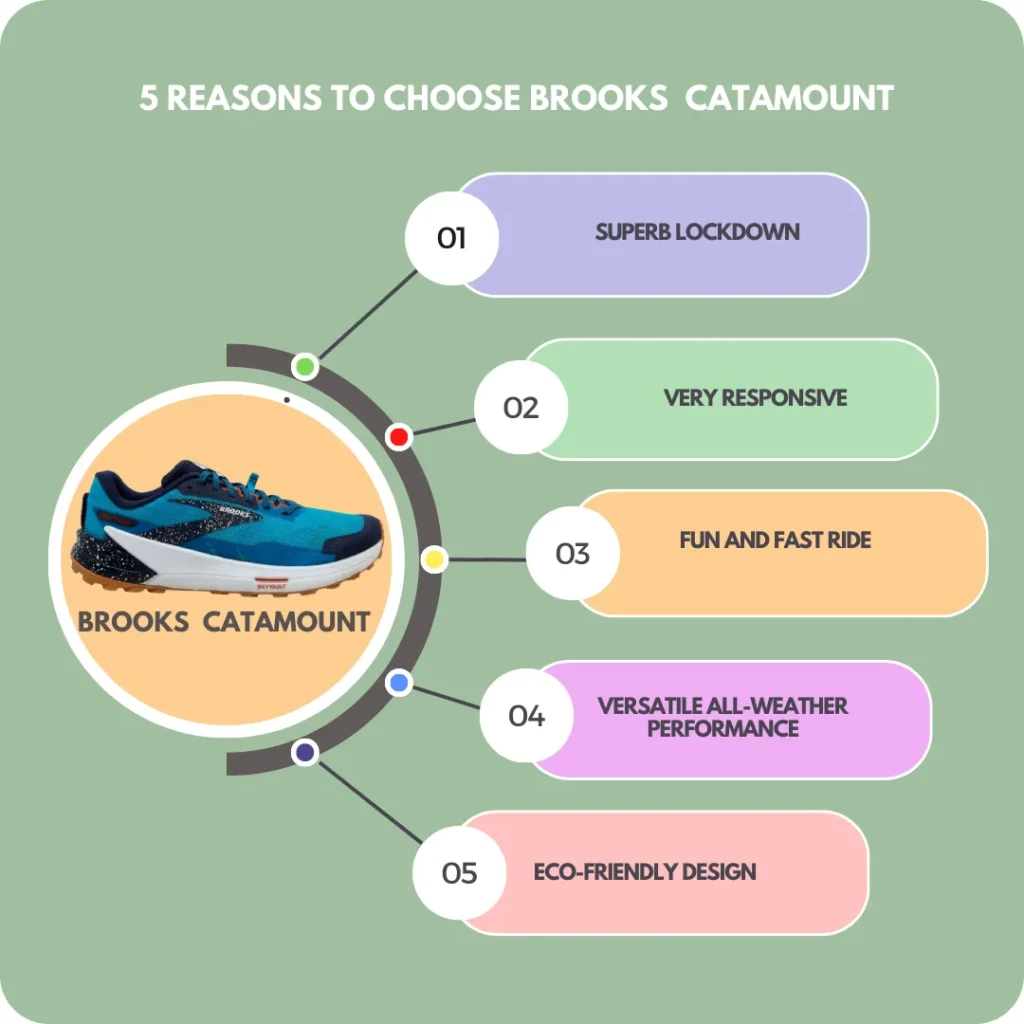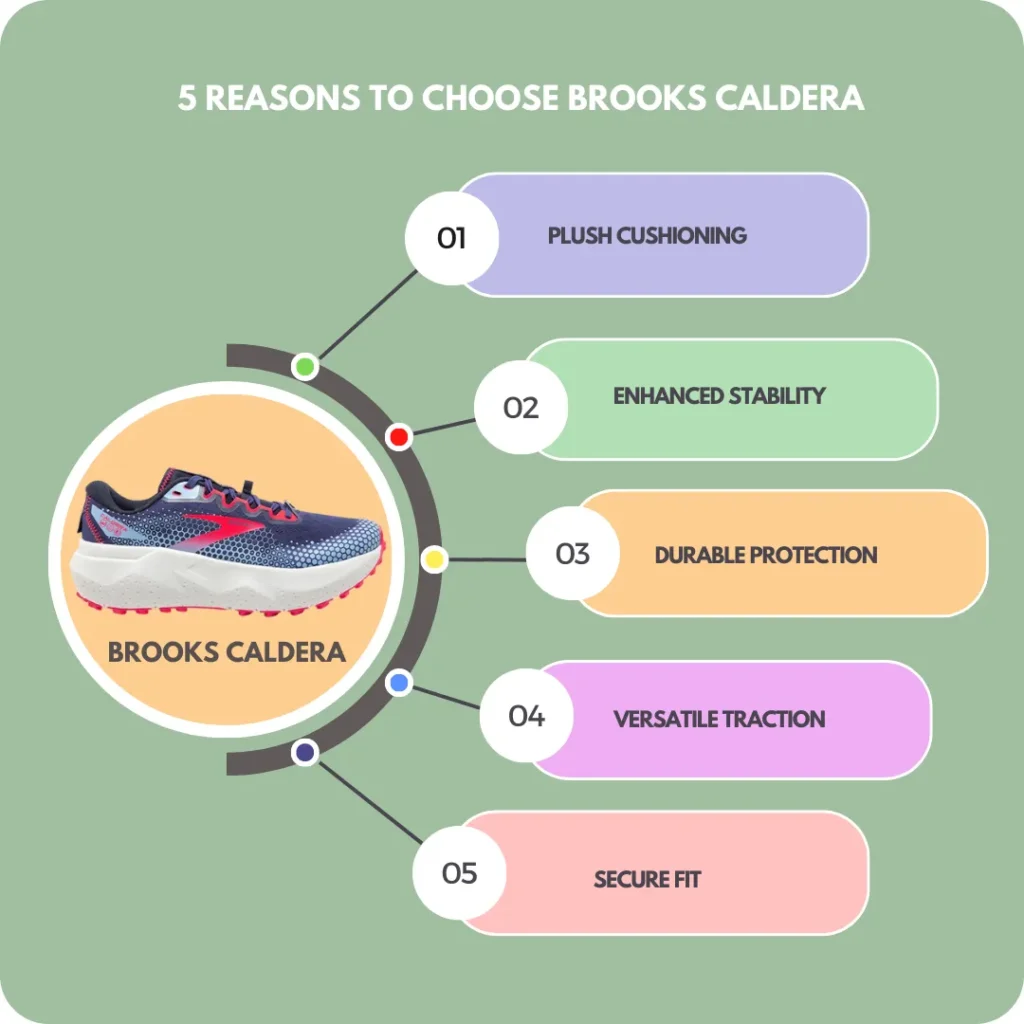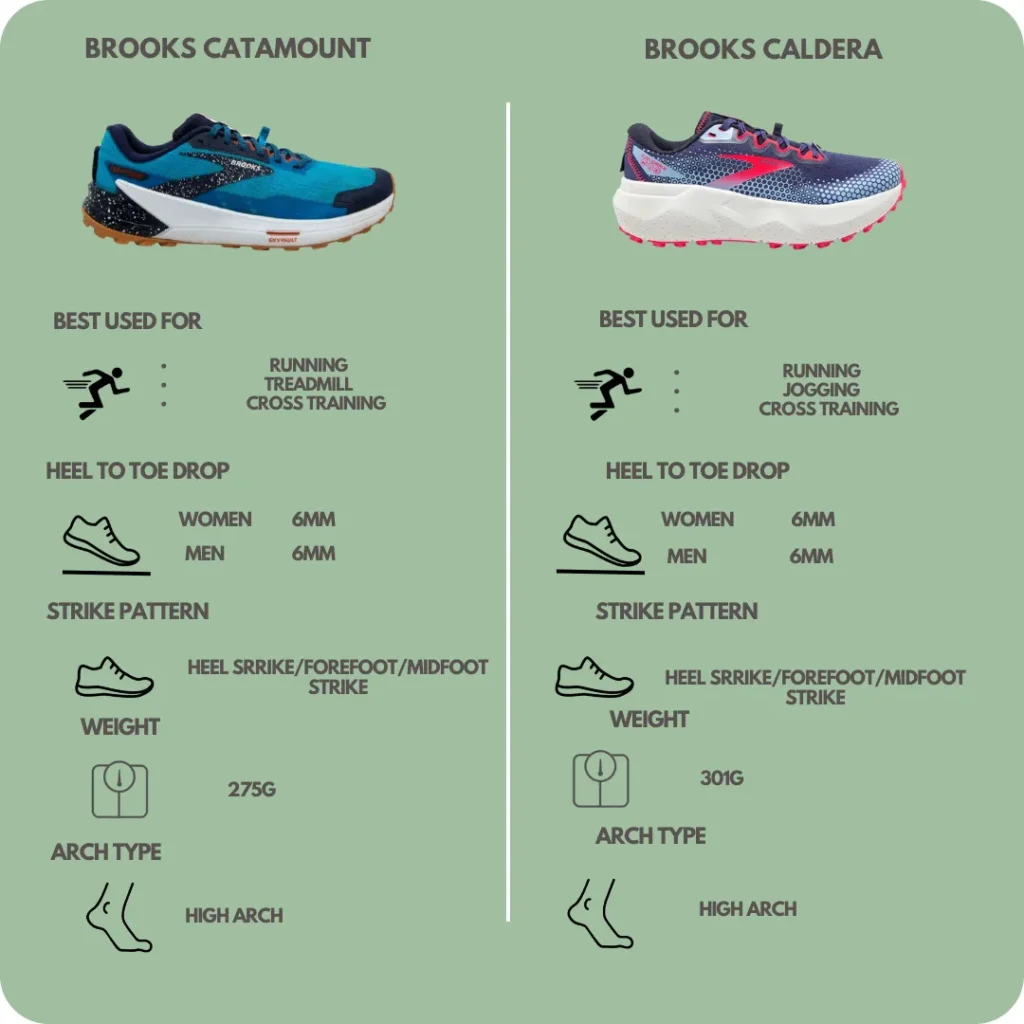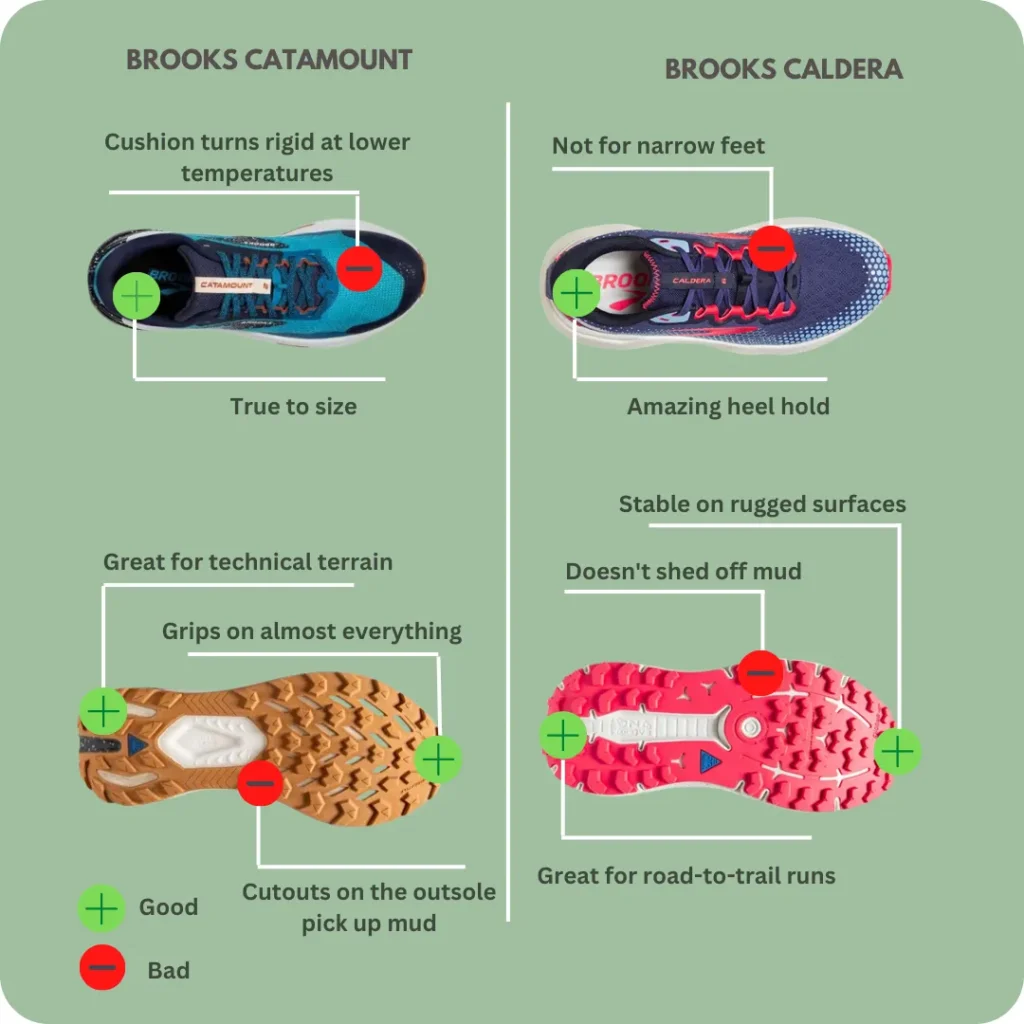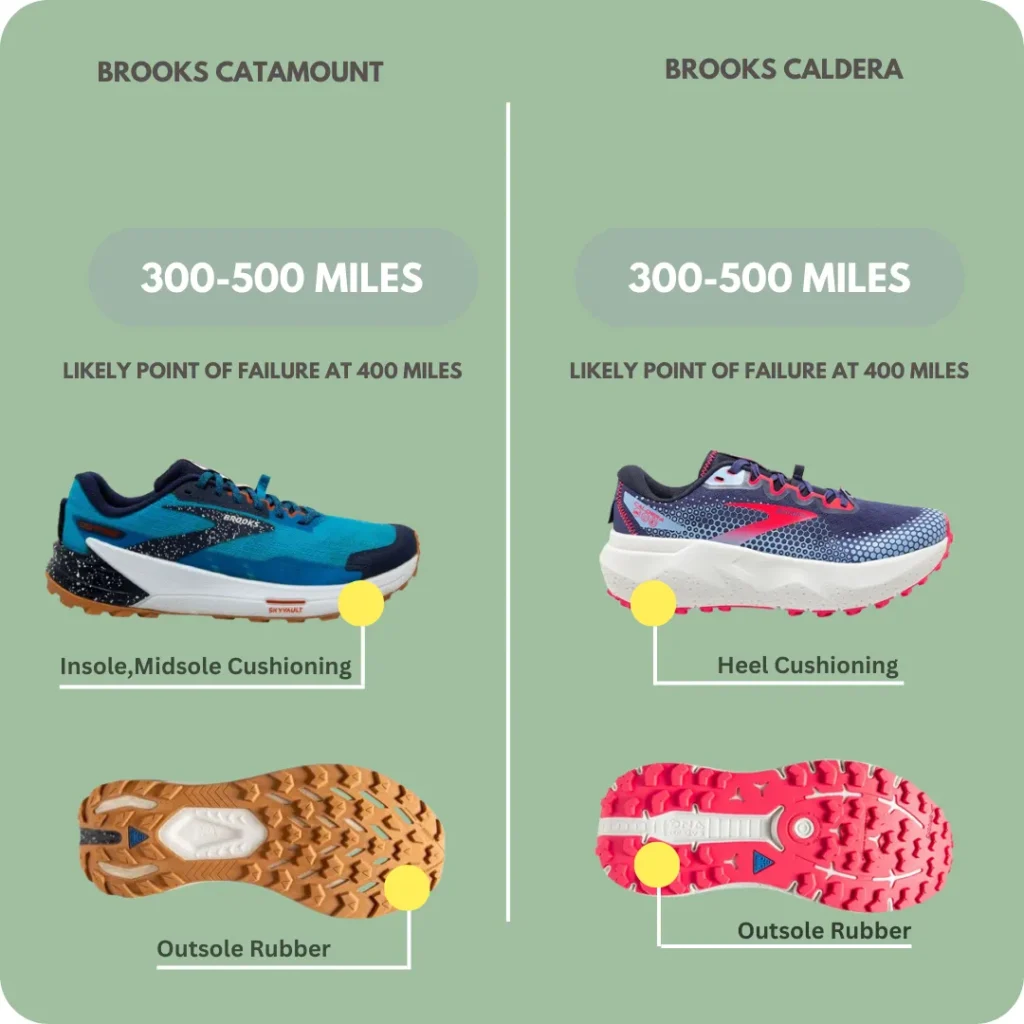Brooks Launch GTS 10 vs Adrenaline GTS 22: Which Running Shoe is Right for You?
When it comes to running, choosing the right shoe is essential for optimal performance and comfort.
In this blog post, we will compare two popular running shoes: the Brooks Launch GTS 10 and the Adrenaline GTS 22.
Understanding the key features and differences between these shoes will help you make an informed decision that aligns with your running style and needs.
Tech Comparison Table – Brooks Launch GTS 10 vs Adrenaline GTS 22
Here’s a detailed technical side-by-side comparison table for comparing the Brooks Launch GTS 10 and the Adrenaline GTS 22:
| Features | Brooks Launch GTS 10 | Brooks Adrenaline GTS 22 |
| Cushioning | BioMoGo DNA midsole with Midfoot Transition Zone | DNA LOFT midsole with GuideRails support |
| Upper Material | Engineered mesh with 3D Fit Print overlays | Engineered mesh with 3D Fit Print overlays |
| Weight | 7.4 oz (about 201.3g) | 9.1oz (about 258.0g) |
| Stack Height | 27mm (Heel), 17mm (Forefoot) | 32mm (Heel), 20mm (Forefoot) |
| Drop | 10mm | 12mm |
| Fit | Medium to high volume | Medium to high volume |
| Stability | Supportive | Supportive |
| Outsole | Durable and flexible rubber | Durable and flexible rubber |
| Traction | Reliable on various surfaces | Reliable on various surfaces |
| Toe Box | Roomy toe box | Roomy toe box |
| Arch Support | Added support for pronation | Added support for pronation |
| Breathability | High | High |
| Durability | Durable construction for long-lasting performance | Durable construction for long-lasting performance |
| Versatility | Suitable for daily training and tempo runs | Suitable for daily training, long runs, and races |
| Recommended Use | Road running, daily training, and tempo runs | Road running, daily training, and long-distance runs |
| Check the latest price on Amazon – For Men – For Women | Check the latest price on Amazon – For Men – For Women |
You May Also Like – Brooks Ghost 15 vs Brooks Adrenaline GTS 22: A Comprehensive Comparison
Overview of Brooks Launch GTS 10
The Brooks Launch GTS 10 is a remarkable running shoe that caters to a wide range of runners.
It combines innovative features and technologies to deliver an exceptional running experience.
One of its standout features is the cushioning system, which provides a plush and responsive feel, ensuring a comfortable and smooth ride.
The shoe’s lightweight design allows for swift and effortless strides, while its breathability keeps your feet cool and dry during intense runs.
Whether you’re a seasoned runner or a beginner, the Launch GTS 10 offers versatility and adapts well to various running surfaces and paces.
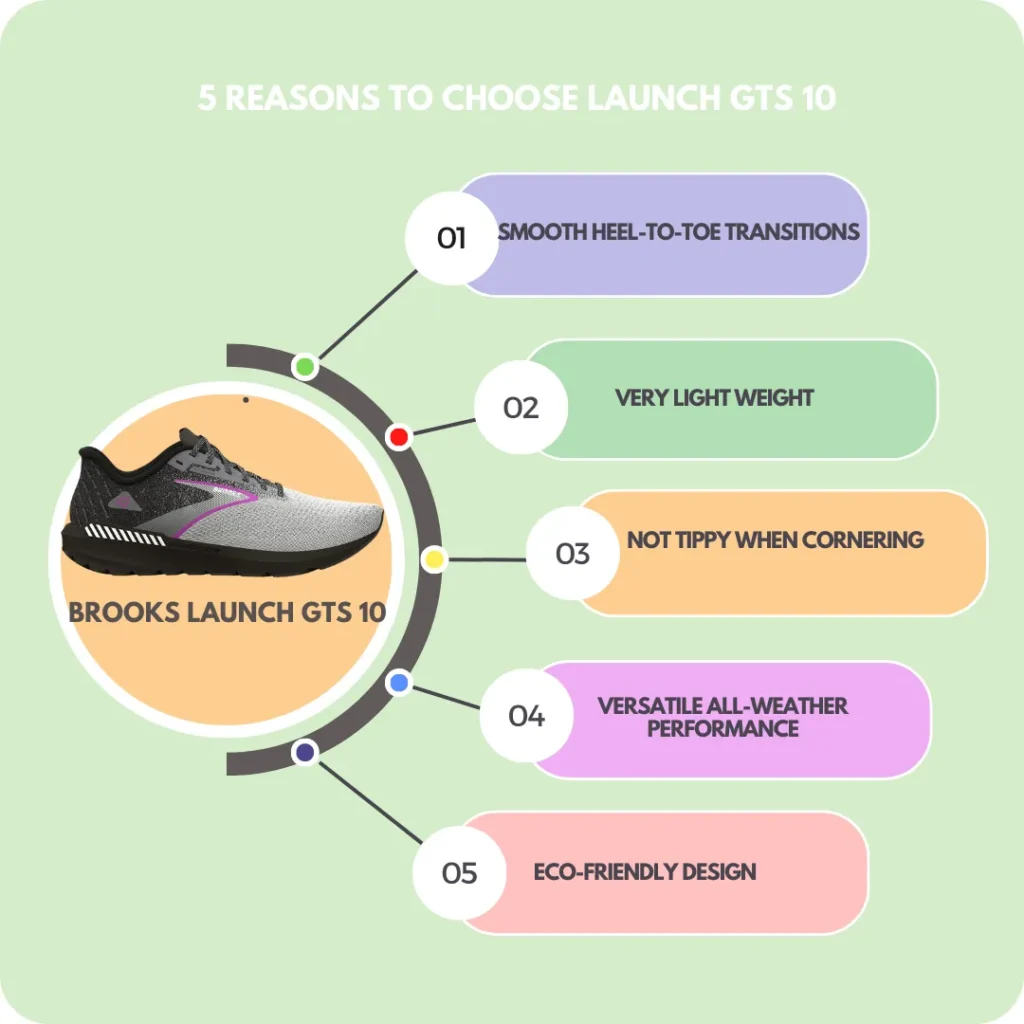
Also Read – Brooks Ghost vs Brooks Launch: Which One is Best for You?
Overview of Adrenaline GTS 22
The Adrenaline GTS 22, an upgrade from its predecessor, is another popular choice among runners.
This shoe boasts unique features and advancements that cater to runners in need of stability and support.
It excels in providing exceptional stability for overpronators, thanks to its specialized support features.
The cushioning system in the Adrenaline GTS 22 ensures excellent shock absorption and energy return, promoting a responsive and dynamic running experience.
Additionally, this shoe is known for its durability and impressive traction, ensuring long-lasting performance on various terrains.
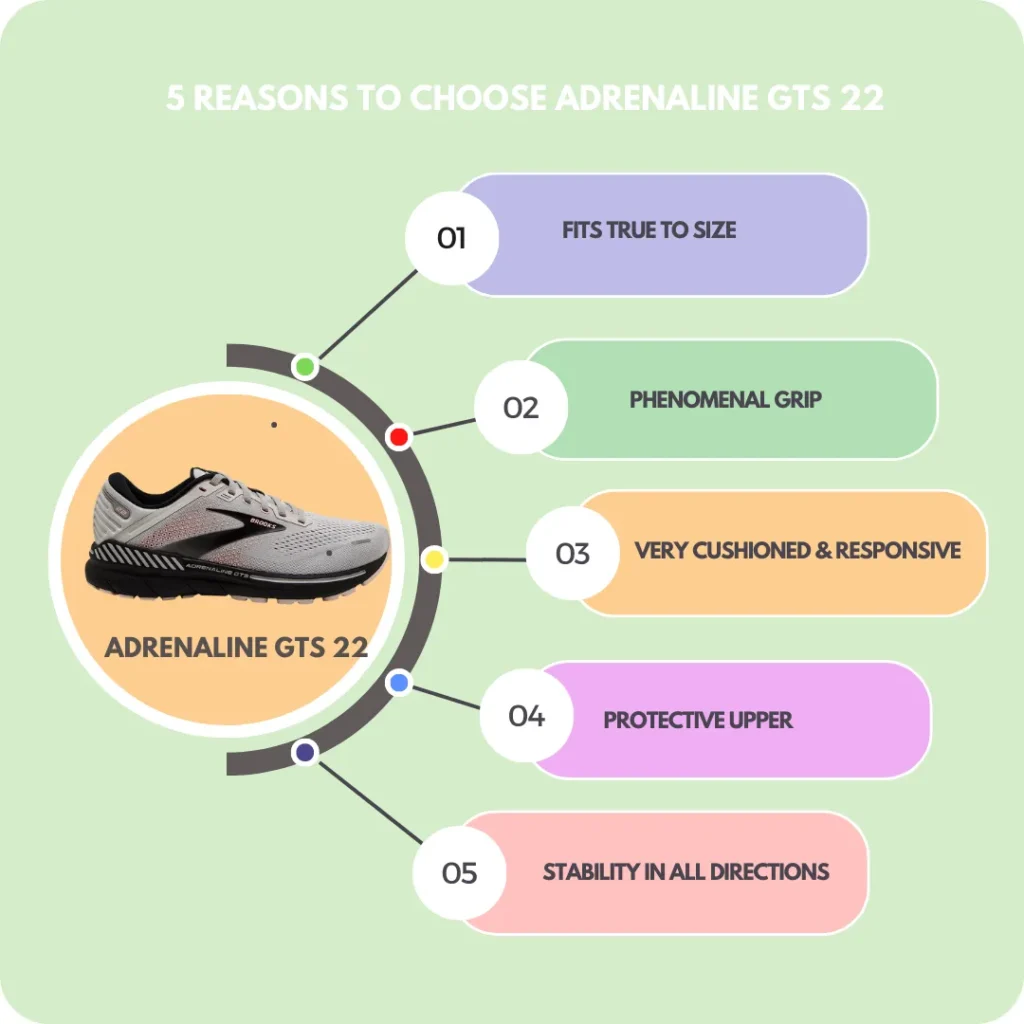
You May Also Like – Brooks Glycerin 20 vs Launch 10: A Comprehensive Comparison
Comparison: Launch GTS 10 vs Adrenaline GTS 22
When comparing the Launch GTS 10 and the Adrenaline GTS 22, several factors come into play.
Firstly, the design and aesthetics of both shoes may appeal differently to individual preferences.
Moving beyond looks, the cushioning and responsiveness of each shoe differ slightly, with the Launch GTS 10 offering a more lightweight and energetic feel, while the Adrenaline GTS 22 prioritizes stability and support.
For runners in need of stability, the Adrenaline GTS 22’s advanced support features make it an excellent choice.
However, neutral runners might find the Launch GTS 10 more suitable, as it provides a balanced and cushioned ride.
It’s crucial to consider your running style and foot type when making this decision.
Also Read – Brooks Hyperion Tempo vs Launch 10: Choosing the Perfect Running Shoe
To facilitate your decision-making process, we have prepared a side-by-side comparison chart that highlights the key features, technologies, and performance aspects of both the Brooks Launch GTS 10 and the Brooks Adrenaline GTS 22.
This chart will serve as a useful reference in evaluating which shoe aligns best with your requirements.
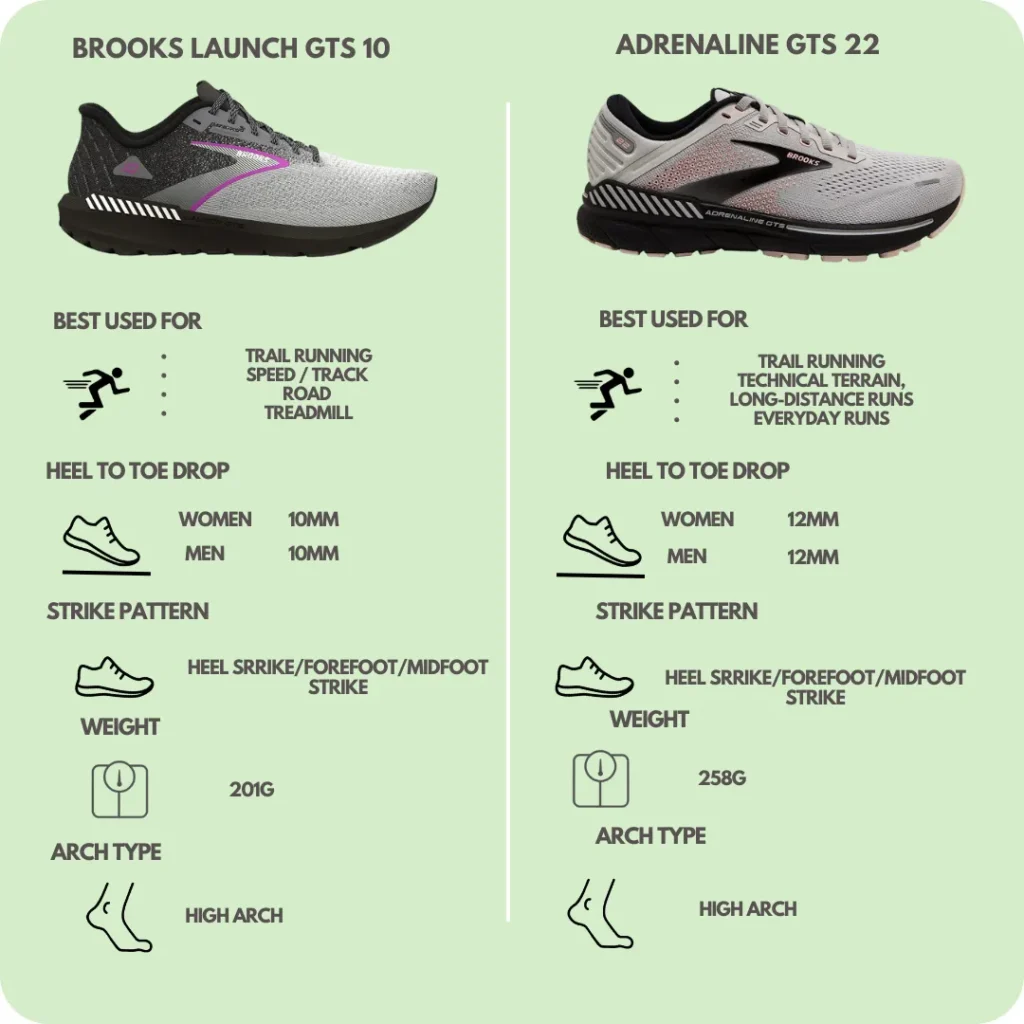
Also Read – Brooks Adrenaline GTS 22 VS Brooks Glycerin GTS 20: Which is Better
Personal Experience with the Brooks Launch GTS 10 and Adrenaline GTS 22
Having had the opportunity to try both the Brooks Launch GTS 10 and the Adrenaline GTS 22, I must say that they are both exceptional running shoes.
However, if I were to choose a favorite, it would undoubtedly be the Brooks Adrenaline GTS 22.
The Brooks Launch GTS 10 impressed me with its cushioning and responsiveness.
It provided a comfortable and smooth ride, thanks to its excellent shock absorption and energy return.
The lightweight design and breathability of the Launch GTS 10 added to its appeal, allowing for an effortless and cool running experience.
The shoe’s versatility also stood out, adapting well to different types of runs.
Overall, the Launch GTS 10 exceeded my expectations and proved to be a reliable running companion.
On the other hand, the Brooks Adrenaline GTS 22 truly won me over with its exceptional stability and support.
As an overpronator, these features are vital for my runs, and the Adrenaline GTS 22 delivered in every aspect.
The shoe’s stability technology kept my foot properly aligned, reducing any excess pronation and providing a secure and comfortable fit.
The cushioning system in the Adrenaline GTS 22 was top-notch, offering excellent shock absorption and a responsive feel.
Moreover, the shoe’s durability and reliable traction made it a long-lasting and reliable choice.
Considering my running style and specific needs, the Brooks Adrenaline GTS 22 perfectly caters to my requirements.
Its stability, support, and cushioning make it the ideal shoe for my overpronation.
It has become my go-to running shoe, accompanying me on numerous runs and helping me reach my running goals with confidence.
While the Brooks Launch GTS 10 impressed me with its cushioning, versatility, and lightweight design, the superior stability and support provided by the Adrenaline GTS 22 make it my personal favorite.
It perfectly suits my needs as an overpronator and offers the comfort and performance I seek in a running shoe.
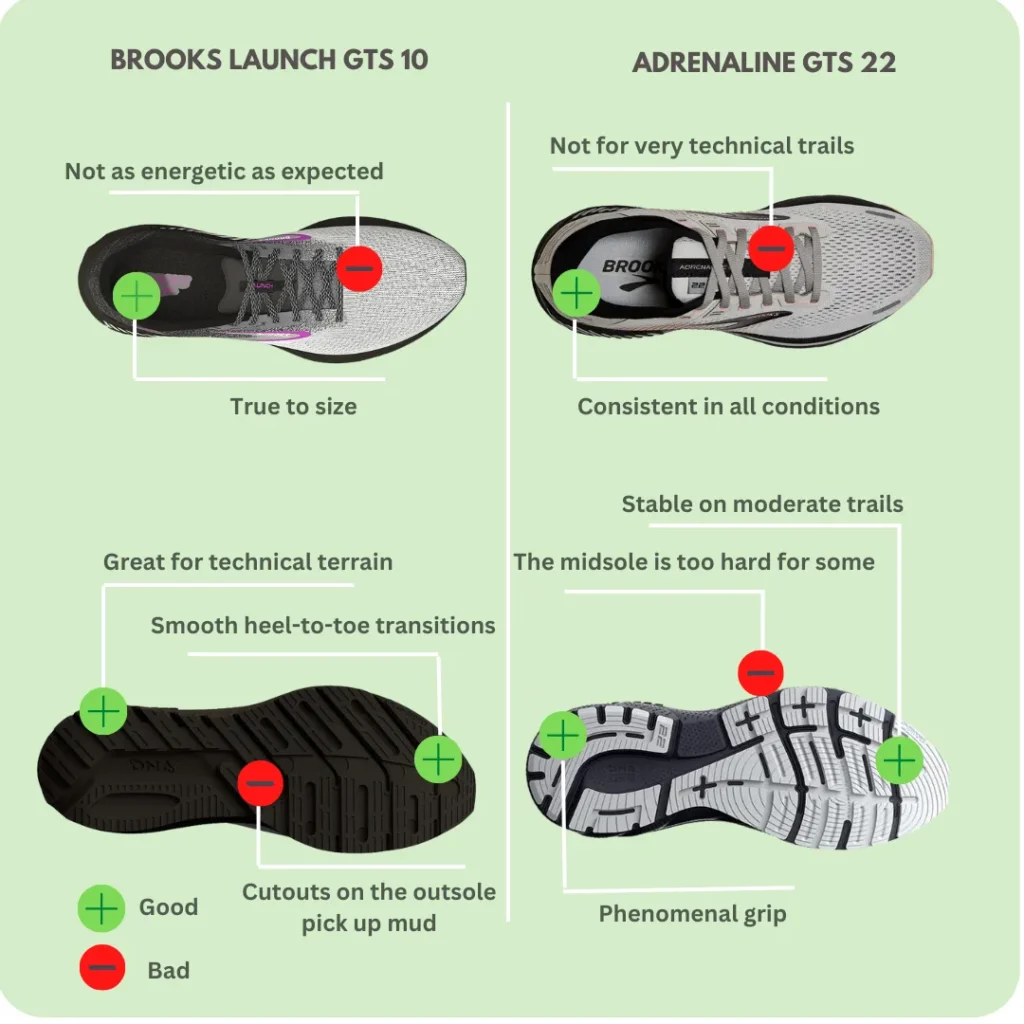
Also Read – Unleashing the Power of Brooks: Is Brooks the Best Running Shoe?
Final Verdict
Selecting the right running shoe is vital for a comfortable and enjoyable running experience.
After reviewing the Brooks Launch GTS 10 and the Adrenaline GTS 22, it’s clear that both shoes offer exceptional qualities.
To determine the best fit for your needs, we recommend trying on both shoes and considering factors such as your running style, foot type, and specific requirements.
Remember, everyone’s feet are unique, and what works for one person may not work for another.
So, before making a final decision, take the time to visit a local store for a personalized fitting or explore more detailed reviews that delve into specific aspects of each shoe.

You May Also Like – Brooks Revel 6 vs Launch 10: A Comprehensive Comparison
FAQs
What are the main differences between the Brooks Launch GTS 10 and the Adrenaline GTS 22?
The Brooks Launch GTS 10 and the Adrenaline GTS 22 are both popular running shoes from Brooks, but they have distinct features.
The Launch GTS 10 offers a lightweight and responsive design, making it suitable for runners seeking a fast and energetic ride.
It combines cushioning and support in a balanced manner.
On the other hand, the Adrenaline GTS 22 is known for its reliable stability and plush cushioning.
It caters specifically to overpronators and offers excellent support for those with pronation issues.
The key differences lie in their focus on responsiveness and stability features.
Also Read – Brooks Launch 10 vs Levitate 6: Unveiling the Ultimate Running Shoe Showdown
Which shoe is better for long-distance running, the Brooks Launch GTS 10 or the Adrenaline GTS 22?
Both the Brooks Launch GTS 10 and the Adrenaline GTS 22 are capable of handling long-distance running, but they cater to different preferences.
The Launch GTS 10’s lightweight and responsive design make it an excellent choice for runners seeking speed and agility during longer runs.
It offers a balanced combination of cushioning and support.
Conversely, the Adrenaline GTS 22’s focus on stability and plush cushioning makes it well-suited for long-distance runners who prioritize support and comfort.
Selecting between the two depends on your personal preferences and specific needs during long-distance runs.
Are there significant differences in terms of stability and support between the Brooks Launch GTS 10 and the Adrenaline GTS 22?
Yes, there are notable differences in stability and support between the Brooks Launch GTS 10 and the Adrenaline GTS 22.
The Launch GTS 10 provides moderate stability, making it suitable for neutral runners or those with mild pronation.
It offers a supportive platform to enhance your running experience.
On the other hand, the Adrenaline GTS 22 is specifically designed to address overpronation.
It offers excellent stability and support to correct pronation issues and promote proper foot alignment.
If you have specific stability needs or overpronation, the Adrenaline GTS 22 may be a better option.
What can I expect in terms of cushioning and responsiveness from the Brooks Launch GTS 10 and the Adrenaline GTS 22?
The Brooks Launch GTS 10 and the Adrenaline GTS 22 offer different experiences in terms of cushioning and responsiveness.
The Launch GTS 10 provides a responsive and energetic ride, combining cushioning and responsiveness to deliver a fast and agile feel.
It strikes a balance between impact absorption and energy return.
On the other hand, the Adrenaline GTS 22 prioritizes plush cushioning to provide a soft and comfortable ride.
It offers generous cushioning to protect against impact and promote a smooth stride.
Consider your preference for responsiveness or maximum cushioning when selecting your shoe.
Brooks Launch GTS 10 vs Adrenaline GTS 22: Which Running Shoe is Right for You? Read More »
